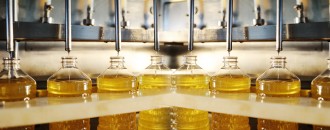
Oils & fats industry sees a sharp growth
Pooja Jain | The Dollar Business
India, the second most populous country after China, is the world’s largest importer of edible oils. The country leaves a big impact on the global oils and fats industry with imports touching 14 million tonnes every year. However, the production within the Indian territory stands at around 7-8 million tonnes each year.
As per the 12th five-year plan, the government wants to increase the domestic production of oils from 7.06 million tonnes to 9.51 million tonnes. Each year, India consumes 20 million tonnes of edible oil with the per capita consumption of about 14-15 kg, when compared to the global average of 22.8 kg.
With the rise in population, lifestyle changes and with the awareness of health and wellness increasing, a stark growth has been seen in the demand of edible oils.
In the backdrop of ‘Fostering Market growth and facing Challenges in the Oils and Fats Industry,’ Oils and Fats International India 2016 was organized by the UK-based- Quartz Business Media in Hyderabad.
Highlighting the importance of Soya, Dr. Davish Jain, Chairman of Soya Bean Processors Association of India (SOFA), said, “Soya based food can easily lower malnutrition. But awareness needs to be created with the government’s help.”
Jain, who is also the President and the group Managing Director at Prestige group of Industries, further said that low productivity of soya in India was due to inclement weather conditions. Right bio-fertilizers can tackle the issue of low productivity, he added.
James Fry, Chairman of LMC International, threw light on the reasons as to why crude supplies did not fall back in the way it was forecasted following low prices.
According to Fry, “The unusual behavior of the CPO market has its roots not only in the severe El Nino since 1997, but also since the introduction of Indonesia’s biodiesel mandate, which made the producers bear the expenses of subsidies in assumption that by taking CPO out of market, they would lift the prices more than the export levy for subsidies.”
The productivity of the shale oil rigs increased ten times since 2007, however since Jan 2016 the production witnessed a fall.
“Shale oil led US crude output growth, but its output is 380,000bbl/day below its peak and other oils are 170,000 bbl below the peak. Both the peaks were 12 months ago,” says Fry.

The productivity of the shale oil rigs increased ten-times since 2007. The total shale output witnessed a slight fall recently
However, despite the US cutbacks, the world crude oil output in 2016 will remain in demand, adding surplus, with Iran ramping up the production, he stated.
“I think we are getting close to the price peak, unless crude prices jump,” he added.
Sumit Gupta, Business Manager at McDonald & Prez Global commodities, pointed out the challenges and key considerations before sourcing from the Indian market.
While the experts urge to reduce imports and increase exports with the theme of Make in India in mind, Gupta’s views were not in sync with others. He said that if the production is not meeting the expectation due to choice of farmers then imports are the sole option. However, the experts of the industry seek government’s help for awareness, increased oil seed area for production and the availability of the right bio fertilizers to the farmers.
“While the Indian market is considered to be chaotic with unreliable supply, unreliable demand, too much of government interference and arbitration, the investors are left with the choice of considering to enter India as it is a huge market with a growing population,” said Gupta at OFI 2016.





 to success.
to success.